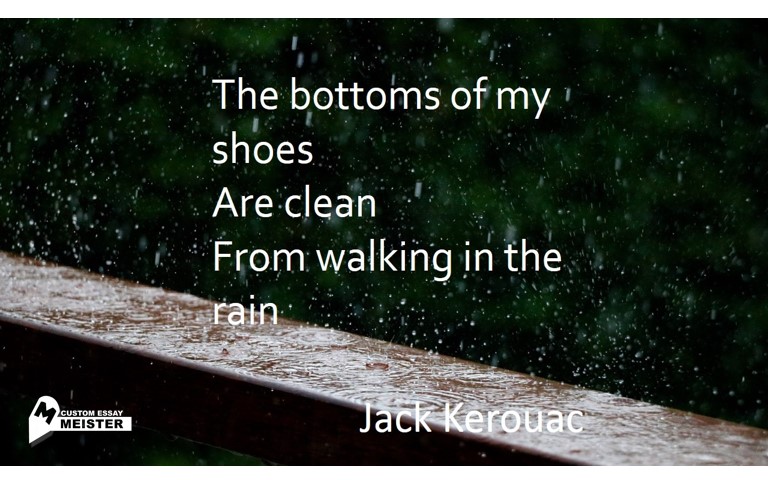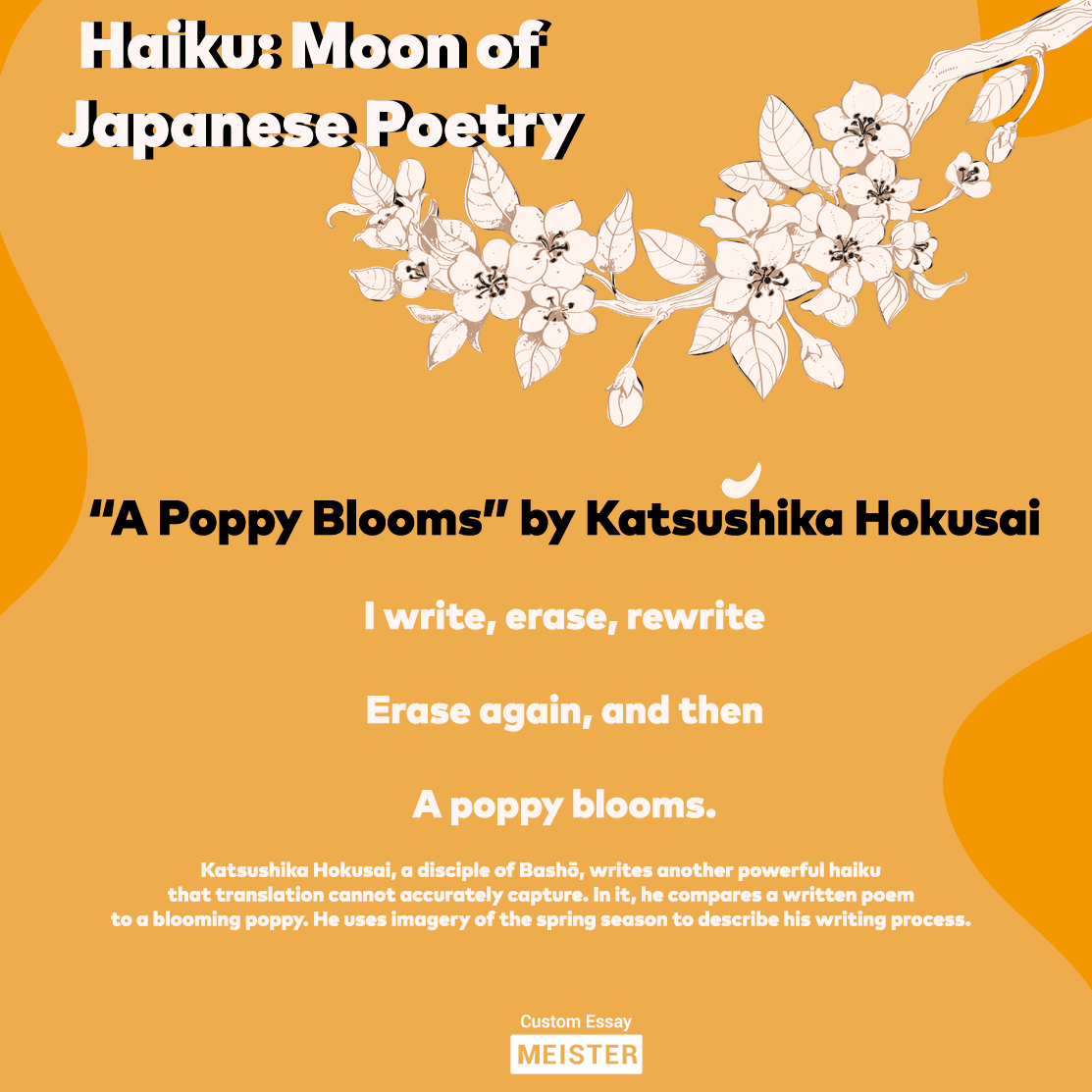Haiku: Moon of Japanese Poetry
T he Haiku is a Japanese form of poetry that became popular in the West around the 1900s. Soon enough, famous poets like Ezra Pound were translating the works of Haiku Masters Matsuo Basho , Yosa Buson, and Kobayashi Issa. This poetic form was naturally celebrated by Imagist poets that it eventually became a staple in Western Literature . However, due to differences in language, some variations had to be done by poets in English. Nevertheless, the visual style of the Haiku remains intact.
What is Haiku?
The Haiku is famous for its short, constrained nature. These are its main characteristics:
5-7-5
A haiku contains only three lines that have a total of 17 syllables. The first line has 5 syllables, the second has 7 syllables, and the third has 5 syllables—no more no less.The 5-7-5 rule is quite difficult to follow in English, especially when translating from Japanese. Thus, there is a difference in opinion among different poets, as some are more lenient especially in translations, while others are stricter.
One image
Given the haiku’s short form, the focus on only one image is unavoidable. Haikus, like the one by Basho below, focus on depicting a single scene in nature. Additionally, this image has a reference to the season. In the traditional Japanese form, this reference is called the kigo.
An old silent pond… A frog jumps into the pond, Splash! Silence again.
by Basho (translated by Ezra Pound)
Juxtaposition
What makes the haiku compelling is the tension in the images. For a haiku to be successful, its images must be contrasting but at the same time resonant with each other. The juxtaposition is instrumental to the revelation of the haiku’s meaning.
Objective experience
Haiku poets do not stop at simply describing nature. Similar to a descriptive essay, the images that comprise the entirety of haikus are metaphors or similes for objective experience.
Kireji
Or “cutting word.” It is found in the middle of the haiku, that is, at the end of the second line. There is no signal word or phrase, but it is there, keeping the first two lines unfinished to make room for the last line. The kireji is what makes the haiku open to interpretation. If we look at the haiku by Kobayashi Issa, the phrase “I keep on” hardly reveals anything about what the persona keeps doing. However, since the first line talks about praying, the reader might think that the haiku is about one’s personal toils (and it may as well be!), only to find that it is actually about the persona being distracted by mosquitoes while praying.
How to write a haiku
As we have mentioned earlier, due to differences between the Japanese and English languages, there are some variations in the haiku. You can say that the haiku is somewhat lost in translation. While modern Western poets have deviated from the 5-7-5 rule, the essence of the haiku is remains alive in their work. Haikus written in English still center on an image related to nature and the objective experience. Structure-wise, the brevity of the three lines remains, as does the
kireji. Whether you want to strictly follow all the rules for writing a haiku is up to you. Just remember that punctuation rules apply even for poetry
. Here is a one by Jack Kerouac to inspire you to write a haiku:
You can also try your hand at other poetic forms or genres like fiction.
Take time away from academic papers
Did you know that writing poetry, fiction, or non-fiction for pleasure can be a great way to de-stress from various academic requirements? These types of writing stimulates the imagination that allows you to forget your deadlines for a short while. Try to make this a practice at least once a week. Don't say you don't have time for this. Not when you can turn to ghostwriting services online like CustomEssayMeister for less creative essays and coursework like research papers and strategic analyses. Go on, get a pen and paper (or open your word processor) and write away!
